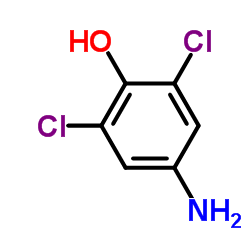Theory and practice of enzyme bioaffinity electrodes. Direct electrochemical product detection.
Benoît Limoges, Damien Marchal, François Mavré, Jean-Michel Savéant, Bernd Schöllhorn
文献索引:J. Am. Chem. Soc. 130(23) , 7259-75, (2008)
全文:HTML全文
摘要
The use of enzyme labeling techniques to convert biorecognition events into high sensitivity electrochemical signals may follow two different strategies. One, in which the current is the electrocatalytic response of a redox couple serving as cosubstrate to a redox enzyme label and another that consists in the detection of an electrochemically active product of the enzyme label. The theoretical relationships that link, in the latter case, the electrochemical current response to the amount of recognized labeled target analyte are established for steady-state diffusion-convection chronoamperometric regimes. Two governing parameters thus emerge. One measures the Michaelis-Menten competition in the enzyme kinetics. The other characterizes the competition between the enzymatic kinetics and the diffusion of the substrate. The electrochemical response is finally related to the labeled target analyte concentration in solution through the recognition isotherm. The direct electrochemical product detection thus provides a route to the characteristics of the recognition isotherm, which serves as a calibration curve in analytical applications. The establishment of further theoretical relationships allows one to surmise the increase in sensitivity that may be obtained by using cyclic voltammetry instead of steady-state chronoamperometry in standard electrochemical cells or by accumulation of the enzyme-product in cells of small volume/surface ratios. The theoretical predictions are tested with the example of the avidin-biotin recognition process in a system that involves alkaline phosphatase as enzyme label and 4-amino-2,6-dichlorophenyl phosphate as substrate, generating 4-amino-2,6-dichlorophenol as electrochemically active product. The advantages of the dichloro-substitution are discussed. The theoretical analysis is a requisite for a rational and realistic discussion of the analytical performances of the steady-state chronoamperometric and cyclic voltammetric approaches. These are shown to compare favorably with the best heterogeneous bioaffinity assays so far reported.
相关化合物
| 结构式 | 名称/CAS号 | 分子式 | 全部文献 |
|---|---|---|---|
 |
2,6-二氯-4-氨基苯酚
CAS:5930-28-9 |
C6H5Cl2NO |
|
Characterization of methemoglobin formation induced by 3,5-d...
1997-03-14 [Toxicology 118(1) , 23-36, (1997)] |
|
Fluorescent materials for pH sensing and imaging based on no...
2013-09-28 [J. Mater. Chem. C 1 , 5685-5693, (2013)] |
|
Theory and practice of enzyme bioaffinity electrodes. Chemic...
2008-06-11 [J. Am. Chem. Soc. 130(23) , 7276-85, (2008)] |
|
In vivo and in vitro 4-amino-2,6-dichlorophenol nephrotoxici...
1994-05-31 [Toxicology 90(1-2) , 115-28, (1994)] |
|
4-Amino-2,6-dichlorophenol nephrotoxicity in the Fischer 344...
1997-11-01 [Toxicol. Appl. Pharmacol. 147(1) , 115-25, (1997)] |